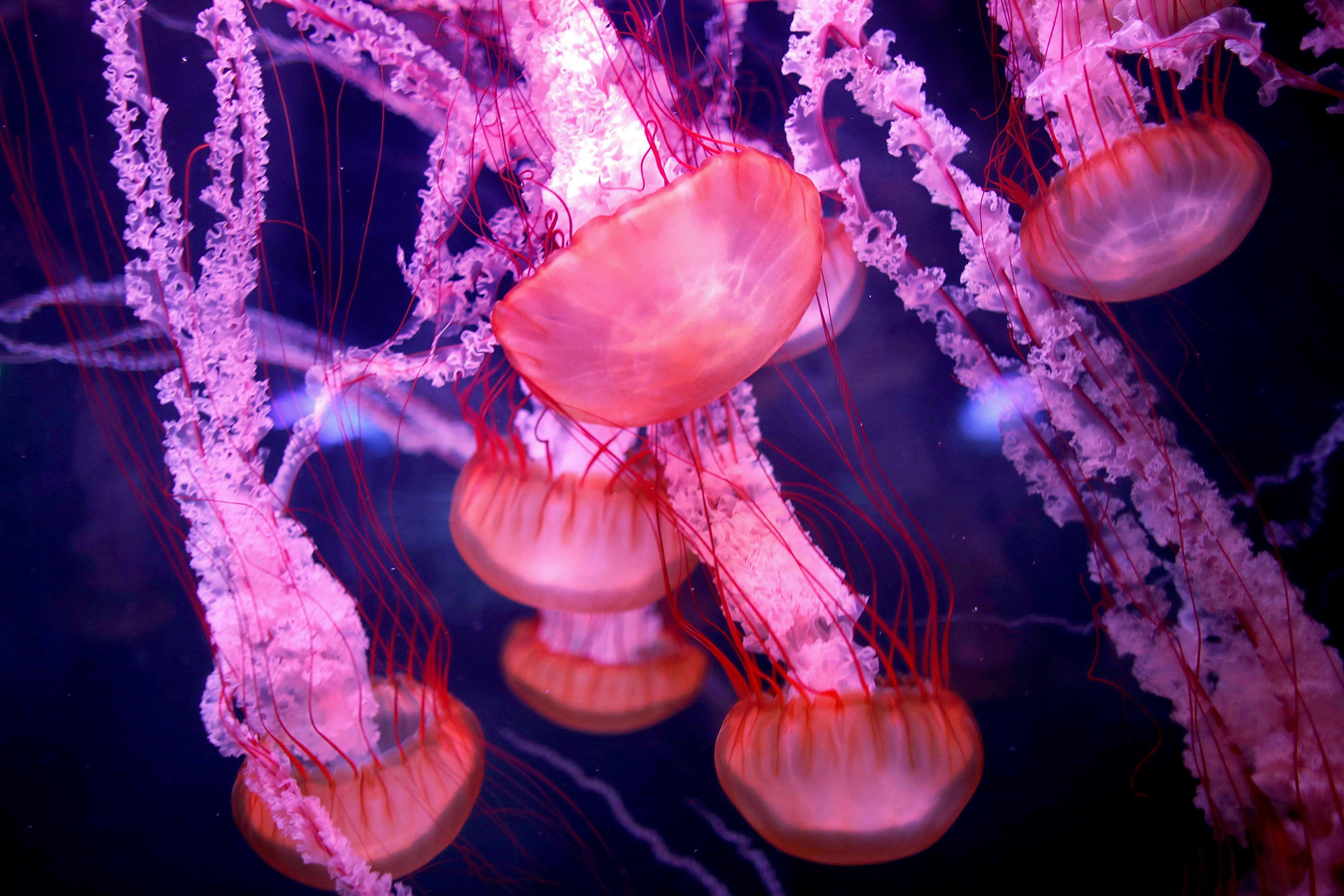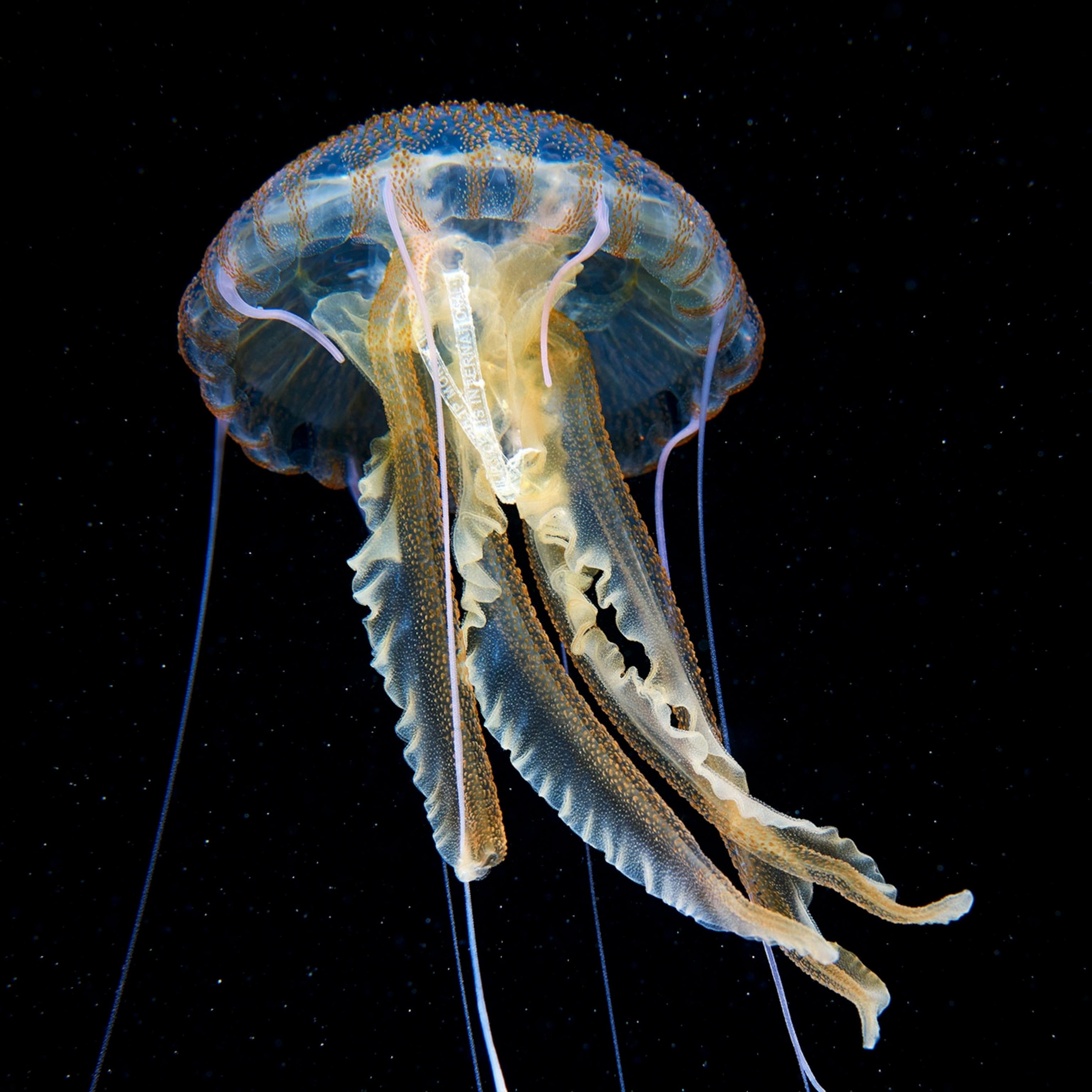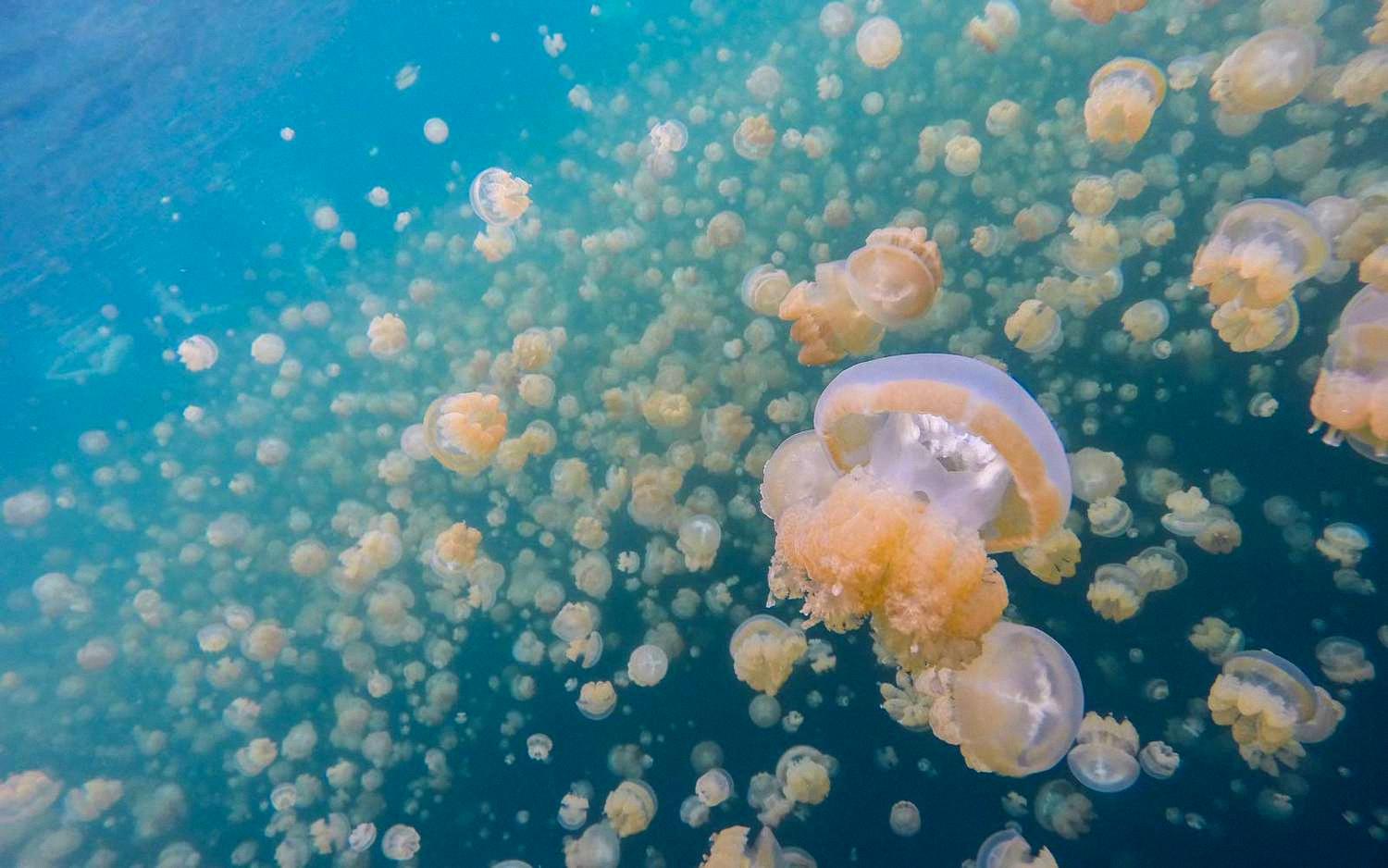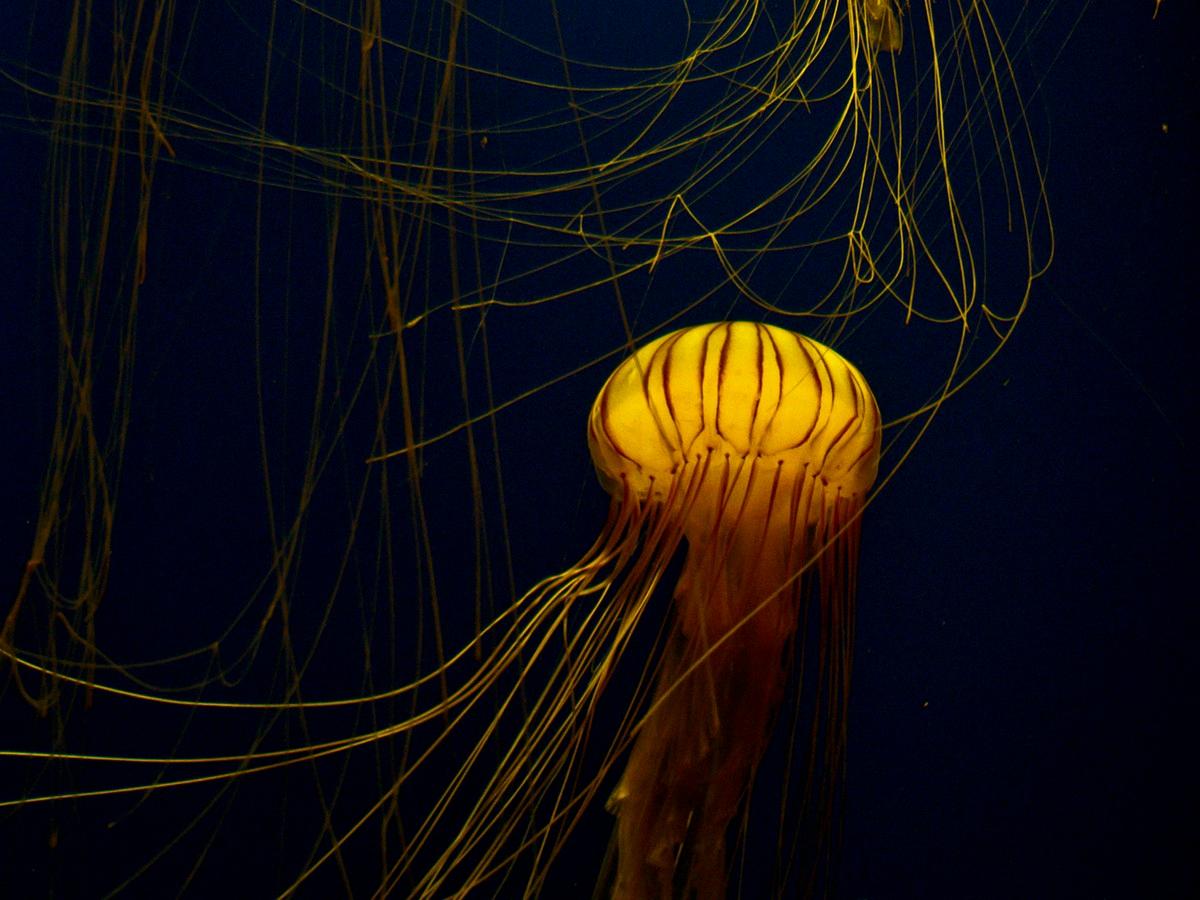Jellyfish are fascinating creatures that have been around for over 500 million years. They come in all shapes, sizes, and colors and can be found in oceans all around the world. One of the most interesting things about jellyfish is that they don’t have a heart, unlike most other animals.
So, the question is, how do jellyfish survive without a heart? Well, the answer lies in their unique anatomy and physiology.
Jellyfish have a very simple body plan, consisting of a bell-shaped body and long tentacles. Their skin is so thin that they can absorb oxygen right through it, so they don’t need lungs. They also don’t have any blood, so they don’t need a heart to pump it.
Instead, jellyfish have a network of canals and tubes called the gastrovascular system. This system runs throughout their body and is responsible for transporting nutrients, oxygen, and waste products. The gastrovascular system is also responsible for helping jellyfish move, as it creates a water jet that propels them forward.
While jellyfish don’t have a heart, they do have a basic nervous system that allows them to sense their environment. This nervous system is made up of a network of neurons that are distributed throughout their body. These neurons can detect changes in light, temperature, and other environmental factors, allowing jellyfish to react and move accordingly.
Interestingly, some species of jellyfish have evolved a specialized structure called a coronal muscle. This muscle runs around the outsie of their bell-shaped body and can contract and relax to help move water through the gastrovascular system. While this muscle isn’t exactly a heart, it serves a similar function and helps to circulate fluids throughout the jellyfish’s body.
Jellyfish don’t have hearts, but they have evolved a unique set of adaptations that allow them to survive and thrive without one. Their simple body plan, gastrovascular system, and nervous system all work together to keep them alive and help them navigate their environment. So the next time you see a jellyfish, remember that they may not have a heart, but they’re still amazing creatures that have managed to survive for hundreds of millions of years.
Living Without a Heart: How Jellyfish Survive
Jellyfish are fascinating creatures that have evolved to survive without a heart. Unlike humans and other animals, jellyfish do not have a circulatory system, which means they do not have blood or a heart to pump it. Instead, they rely on a simple diffusion system to distribute oxygen and nutrients throughout their body.
Jellyfish have a thin, flexible skin that allws them to absorb oxygen directly from the water. This process is called diffusion, and it works by allowing oxygen to pass through the skin and into the jellyfish’s body. As the oxygen diffuses through the skin, it is carried to the various cells and tissues that make up the jellyfish’s body.
Similarly, jellyfish do not have a complex digestive system. Instead, they have a simple digestive cavity that allows them to capture and consume small organisms, such as plankton and tiny fish. Once the food is captured, it is broken down in the digestive cavity and the nutrients are distributed throughout the body via diffusion.
In summary, jellyfish have evolved to live without a heart by relying on diffusion to distribute oxygen and nutrients throughout their body. While this may seem like a simple and inefficient system, it has allowed jellyfish to survive and thrive in a variety of aquatic environments for millions of years.

Source: cnn.com
Do Jellyfish Possess an Awareness of Their Own Existence?
Jellyfish are invertebrates that lack a central nervous system and a brain. They have a simple nerve net that allows them to sense teir environment and respond to stimuli, such as light and touch. However, this does not mean that jellyfish have the capacity for self-awareness or understanding of their own existence.
In fact, research suggests that jellyfish do not possess the cognitive capacity to experience consciousness or emotions, like humans or other complex animals do. They lack the complex neural structures and functions that are necessary for such abilities.
Therefore, it can be concluded that jellyfish do not know they are alive, as they do not possess the cognitive processes required for self-awareness or introspection. They simply respond to stimuli in their environment to survive and reproduce, without any conscious awareness of themselves or their surroundings.
Do Jellyfish Experience Pain?
Jellyfish, being invertebrates, do not have a central nervous system like humans and other animals with a backbone. They lack the necessary structures such as a brain, heart, bones or respiratory system to feel pain in the same way as humans do. They have a simple network of nerves that are spread throughout their bodies and allow them to sense their environment, but they do not process information in the same way that a complex nervous system would. Therefore, it is believed that jellyfish do not experience pain in the same way that humans do. While they can respond to stimuli such as touch or light, it cannot be equated to feeling pain. In short, it is unliely that jellyfish can feel pain in the same way humans do.
Do Jellyfish Possess a Brain?
Jellyfish do not have a single centralized brain in the way that humans or other vertebrates do. Instead, they have a decentralized nervous system that is adapted to their unique body plan. The nerve cells in a jellyfish are arranged in a radially distributed network of nerve nets that stretch througout the animal’s body. This network is responsible for coordinating the jellyfish’s movements, sensory information, and even basic reflexes. While this decentralized nervous system is not as sophisticated as a centralized brain, it is still capable of processing information and directing the jellyfish’s behavior in response to its environment. So, in summary, while jellyfish do not have a traditional brain, they do have a decentralized nervous system that performs many of the same functions.
Can Dead Jellyfish Still Sting?
Yes, jellyfish can still sting if they are dead. Though the jellyfish’s body may no longer be alive, their tentacles are still capable of delivering a painful sting. This is because the stinging cells, called nematocysts, remain active even after the jellyfish has died. In fact, dead jellyfish can sometimes pose a greater threat than live ones as they are often harder to see and avoid. It is important to exercise caution and avoid contact with any jellyfish, whether they are alive or dead, to prevent getting stung.

Source: nationalgeographic.com
The Possibility of an Immortal Jellyfish
Yes, there is a jellyfish that never dies, and it is known as Turritopsis dohrnii. This hydrozoan, which is only about 4.5 millimetres in size, has the ability to reverse its life cycle and start anew. This means that when it reaches maturity and reproduces, instead of dying, it transforms back into its juvenile form and begins its life cycle again. This process can continue indefinitely, giving it the nickname of the “immortal jellyfish.” This unique ability has fascinated scientists for years and has led to research on its potential applications in regenerative medicine.
The IQ of a Jellyfish
Jellyfish are fascinating creatures that belong to the phylum Cnidaria. They are invertebrates and do not possess a brain or any central nervous system. This means that they do not have the ability to think, reason, or solve problems, which are all factors that are measured by an IQ test. Therefore, it is not possible to determine the IQ of a jellyfish as they do not possess the necessary cognitive abilities to perform an IQ test.
Lifespan of Jellyfish
While there are some species of jellyfish that can live for a few decades, they will eventually die due to various factors such as predation, disease, or environmental changes. Additionally, jellyfish have complex life cycles that involve different stages of development, including polyps and medusae, which can have different lifespans. Therefore, it is important to note that jellyfish, like all living organisms, have a limited lifespan and do not live forever.
Lifespan of Jellyfish
Jellyfish, like many othr aquatic creatures, have a varied lifespan. Most species of jellyfish have a lifespan of one to three years, during which they go through several stages of development. However, there are certain species of jellyfish that can live for just a few days or even up to several decades. It is important to note that the lifespan of a jellyfish can also be influenced by environmental factors such as water temperature, food availability, and predators. To begin their life cycle, fertilized jellyfish larvae float in the ocean until they eventually sink and attach themselves to the seabed or coral reefs, where they develop into polyps. Overall, the lifespan of a jellyfish varies depending on the species and environmental factors, but they generally live from one to three years.

Source: travelandleisure.com
Do Certain Animals Lack the Ability to Feel Pain?
There is still much debate and research being conducted on which animals do and do not feel pain, but current scientific consensus suggests that most animals, including insects, do have some capacity to sense and respond to painful stimuli. However, the extent to which they experience pain, and the mechanisms by which they process it, may vary greatly between different species. Some studies suggest that crtain invertebrates, such as jellyfish and sea anemones, may not have the neural structures necessary to experience pain, while others suggest that certain fish and reptiles may have limited capacity for conscious awareness of pain. However, it is important to note that the exact nature of animal consciousness and perception is still an active area of research, and our understanding of pain in animals is likely to evolve as new findings emerge.
Are Jellyfish Capable of Sight?
Jellyfish are not completely blind, but the level of visual ability varies depending on the species. While some jellyfish have only basic “eye spots” that can detect light but not much else, others have a more developed visual system that includes lenses, retinas, and corneas. These more advanced jellyfish, such as box jellies, can see blurry images. Therefore, while jellyfish may not have the same level of visual acuity as humans or other animals, they do have some visual capabilities.
The Consequences of Touching a Jellyfish Head
If you touch a jellyfish’s head, you may come into contact with its tentacles, which contain tiny triggers on teir surface that release stingers. These stingers are designed to pierce the skin and deliver venom, which can cause a painful and potentially dangerous reaction. The venom affects the area of contact and may enter the bloodstream, leading to symptoms such as burning, stinging, swelling, and redness. In severe cases, the venom can cause nausea, vomiting, difficulty breathing, and even cardiac arrest. Therefore, it is important to avoid touching jellyfish, especially their heads, and to seek medical attention immediately if you experience any symptoms after contact with a jellyfish.
Do Jellyfish Have Distinct Genders?
Yes, jellyfish do have genders. Most jellyfish are either male or female, although there are some hermaphroditic species as well. The sex of a jellyfish is determined by its genetics and is not influenced by external factors. When it comes to reproduction, adult jellyfish release sperm and eggs into the surrounding water. The eggs are then fertilized by the sperm, and the resulting larvae develop into new jellyfish. It’s important to note that jellyfish reproduction is different from that of most other animals, as it takes place outside of the body and without any direct contact between the parents.

Source: theatlantic.com
Do Jellyfish Possess Eyes?
Yes, jellyfish do have eyes. In fact, they have six eye clusters located at the base of their bell-shaped body. Each cluster contains four very simple eyes, which are pigment-filled pits that allow the jellyfish to detect light. Additionally, each cluster also contains a pair of more complex, lensed eyes which enable the jellyfish to see more clearly. While the eyes of jellyfish may not be as sophisticated as those of humans or other animals, they are still important sensory organs that allow jellyfish to navigate their surroundings and detect prey.
Can Humans Consume Jellyfish?
Yes, humans do eat jellyfish, especially in Southeastern Asia where it is a common dish. While some jellyfish species are toxic to humans, others are safe to consume and are believed to offer several health benefits. Jellyfish is often prepared by slicing it thinly and marinating it in vinegar, soy sauce, or sesame oil. It has a chewy and slightly salty taste, and is often used in salads, soups, or stir-fries. However, it is important to note that not all jellyfish species are safe to eat, and proper preparation is necessary to avoid any potential health risks.
Conclusion
In conclusion, jellyfish do not have hearts because they do not possess a circulatory system or blood. Instead, ther thin skin allows them to absorb oxygen directly from the water. Although they do have a network of neurons that allow them to sense their environment, jellyfish have no centralized brain and are not aware of their own existence. Their unique body plan is adapted to their decentralized nervous system, and they rely on stinging their prey to eat. Therefore, we can say that jellyfish are fascinating creatures that have evolved unique adaptations to survive without vital organs like a heart.
